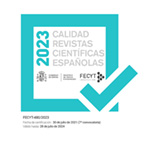“Más Allá de la Frontera Letrada: El Horizonte de un Comparatismo Nuevo en los Estudios Fronterizos Unión Europea /América-Latina”
Resumen
Un malestar planea sobre los denominados ‘border studies’. Aquel se sitúa a un nível político tanto cómo teórico en una vacilación normativa que le impide a la disciplina diferenciar entre formas espectaculares de fronterización que sólo reproducen la función represora de fronteras (ie, Yo/Otro), y los que apuntan a roles alternativos para prácticas fronterizas de índole más transductor y mediador de las relaciones socio-espaciales. Abarcando un ‘road less traveled’, el ensayo propone explorer la segunda opción repensando la relación geo-histórica entre europa y américa latina en cuanto al desenvolvimiento de una ‘frontera letrada’. Inspirado por la obra de Angel Rama, el autor desvela una fronterización comparativa incesante, con orígen en los primeros tratados y mapas coloniales entre poderes europeos, cuyos ecos poscoloniales siguen resonando en una dialéctica fronteriza interna/externa entre ambos continentes. Por medio de un ‘ritmo-análisis’ fronterizo y trans-atlántico, el artículo concluye proponiendo otra forma de ver las fronteras entre europa y america latina, no tanto cómo líneas separadoras entre entidades geopolíticas fuertemente diferenciadas, sino cómo horizontes que demarcan una modernidad co-producida y compartida.
Descargas
Descarga artículo
Licencia
La revista Geopolítica(s). Revista de estudios sobre espacio y poder, para fomentar el intercambio global del conocimiento, facilita el acceso sin restricciones a sus contenidos desde el momento de su publicación en la presente edición electrónica, y por eso es una revista de acceso abierto. Los originales publicados en esta revista son propiedad de la Universidad Complutense de Madrid y es obligatorio citar su procedencia en cualquier reproducción total o parcial. Todos los contenidos se distribuyen bajo una licencia de uso y distribución Creative Commons Reconocimiento 4.0 (CC BY 4.0). Esta circunstancia ha de hacerse constar expresamente de esta forma cuando sea necesario. Puede consultar la versión informativa y el texto legal de la licencia.









